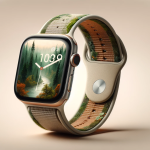Pimax has introduced the Crystal Light VR headset, aiming to capture enthusiasts with its high-resolution display and expansive field of view. Designed for immersive gaming, the headset emphasizes visual clarity but comes with noticeable physical drawbacks. Users may find themselves balancing the impressive visuals against the device’s bulk and connectivity limitations, making it a distinctive choice in the competitive VR market.
While previous iterations of Pimax headsets focused on standalone functionality, the Crystal Light shifts towards a tethered experience, highlighting a strategic move to enhance performance. This approach contrasts with earlier models that prioritized wireless versatility, indicating Pimax’s commitment to delivering top-tier visual quality despite increased setup complexity.
Is the Pimax Crystal Light Comfortable for Extended Use?
The headset’s design incorporates cushioned faceplates that help distribute weight, mitigating some discomfort during prolonged sessions.
“The shape around the head is good and cushioned faceplates work well to offset some of that weight,”
a user noted. However, the front-heavy structure leads to pressure on the nose and face over time, a common issue in high-end VR devices.
How Does the Crystal Light Compare to Competitors in Performance?
With a resolution of 2880 x 2880 per eye and a 120 Hz refresh rate, the Pimax Crystal Light stands out among mainstream VR headsets. It offers superior clarity, placing it just behind Pimax’s 8K and 12K models and Varjo’s XR4. Despite its higher price point of $887, it provides competitive performance, particularly excelling in rendering detailed environments for simulation and cockpit-based games.
Are the Connectivity and Setup Practical for Most Users?
The Crystal Light requires connections to a power outlet and a DisplayPort, which can be cumbersome compared to more streamlined options. The proprietary cable system limits mobility and complicates troubleshooting, making it less ideal for those with standard gaming rigs or who prefer a more flexible setup. This design choice may deter users seeking ease of use and portability.
The Pimax Crystal Light excels in delivering high-definition visuals and a wide field of view, enhancing the immersive quality of stationary and simulation-based games. However, its bulkiness and connectivity constraints present significant challenges for active VR gaming and general use. Users who prioritize visual fidelity and have robust gaming setups may find it a worthy investment, while those seeking comfort and ease of use might consider alternative options.
Overall, the Pimax Crystal Light offers a compelling option for VR enthusiasts focused on high-resolution experiences. Its strengths lie in visual performance and suitability for simulation games, but the trade-offs in comfort and connectivity may limit its appeal to a broader audience. Prospective buyers should weigh these factors based on their specific gaming preferences and setup capabilities.










